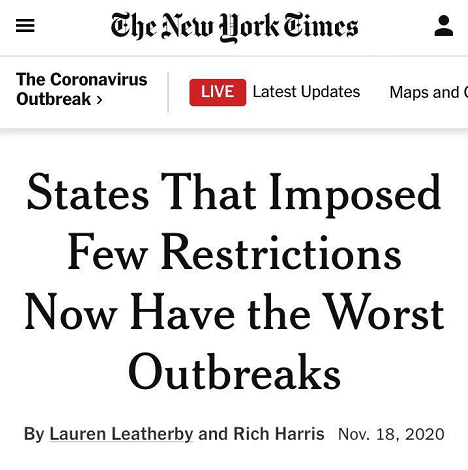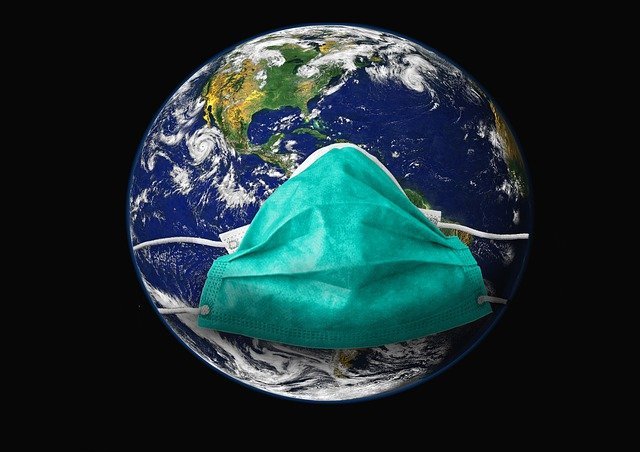according to Johns Hopkins University, the United States reported 187,833 new confirmed cases of COVID-19 on the 19th. This is the first time that the number of new cases in the United States exceeded 187,000 in a single day, breaking the record again, and the 16th consecutive day to reach more than 10 new cases in a single day. 0000 cases.
In just three weeks, the United States has pulled the average number of new cases per day from 100,000 to nearly 200,000. According to the current trend, even if it does not continue to deteriorate, an additional 7 million Americans will be infected with the virus by the end of 2020.
The media pointed out that the upcoming Thanksgiving and Christmas seasons, coupled with the “zero and eight” epidemic policies across the United States, will once again pose serious challenges to epidemic prevention.

The number of confirmed cases is approaching 200,000, and the spread of the virus has lost control.
On November 19, the United States reported more than 187,000 new confirmed cases of COVID-19 in a single day, breaking the record again. This is only three weeks after the first report of 100,000 confirmed cases in the United States. The New York Times noted that “this alarming number shows that the spread of the virus has gone out of control.”
The latest seven-day average of the United States shows that the United States is currently growing at an average of 166,000 cases per day. Even if the rate does not continue to deteriorate, there will be an additional 7 million U.S. population infected with the virus by the end of 2020, and this additional population alone is “equivalent to about 2% of the population of the United States”.
On November 20, White House coronavirus coordinator Deborah Birx expressed concern about the spread of the virus on television. “It is now faster and wider. What I am worried about now is that it may last longer.”

Hospitalization rate increased by 50% in two weeks, and COVID-19 has become the third largest cause of death in the United States.
It is reported that there are more than 80,000 hospitalized patients with COVID-19 in the United States, which is more than at any time since the outbreak of the epidemic. In particular, the number of hospitalized patients has soared by 50% compared with the past two weeks, and the death toll has also increased by 63% during the same period, and so far it has exceeded 252,000 people in total.
According to a new study by the well-known Caesar Family Foundation in the United States, COVID-19 has become the third largest cause of death in the United States after heart disease and cancer. If the current trend continues, the death toll may reach 300,000 by New Year’s Eve.

Experts hide from the epidemic at home, church: Bring neighbors to dinner
Although the epidemic has caused more than 60% of passenger traffic in the United States from last year, major American airlines still expect Thanksgiving to be the busiest flying season since the outbreak of this year. American Airlines expects to fly around the holiday by 15% more than the rest of the month; Delta expects to carry about 2 million passengers during the holiday; United Airlines also believes that Thanksgiving will be the busiest week since the outbreak.

However, the U.S. Centers for Disease Control and Prevention once again urged people to avoid traveling. To this end, the New York Times conducted an informal survey of 635 epidemiological experts, and the vast majority said that they did not plan to have dinner with friends for safety; 79% said they were only prepared to have Thanksgiving dinner with their families or not to meet at all; and only 21% said that they would be with people other than their families. Get up and eat.
But the advice of professionals is not accepted by the American public. Newsweek noted that Oklahoma only issued a mask injunction for the first time on November 16 due to the surge in the epidemic, but only required state employees to wear them in office premises. Meanwhile, a 13,000-member cathedral in the state has high-profile social media announcements that a massive Thanksgiving feast will be held on November 22, and called on people in the parish to “come and share meals with us and bring your neighbors with us”.

Research results: The fewer restrictions, the more serious the epidemic.
A recent survey of the Bravanic School of Government of Oxford University shows that the severity of the epidemic in the United States is directly related to the preventive measures of local governments. The places where the epidemic is most serious now are places where local governments neglect to continue to fight the epidemic or have no measures to implement in the beginning.
The New York Times quoted the survey as saying that the most outbreak in the Midwest states is currently the most severe and the region with the least measures to suppress the virus. For example, North Dakota, the state government announced the lifting of restrictions and a full reopening in May. As a result, almost one in 10 residents in the state is currently diagnosed with COVID-19. .
Thomas Hale, associate professor of global public policy at the Blavanic School of Government, Oxford University, believes that as the epidemic develops, the relationship between policy and the severity of the epidemic becomes clearer. “Like New England, which has adopted a consistent control policy, avoided the summer rebound of the epidemic, and now rebound is smaller in the autumn. And Florida, Texas and other places quickly lifted restrictions, so the epidemic rebounded sharply.

The biggest problem: the policy is “078 broken”
The New York Times noted that the biggest problem in the United States at present is that “without strong national guidance, state control policies are completely different”.
The report compares Maine in the northeastern United States and South Dakota in the Midwest. The former began to impose mask mandatory orders in the early days of the outbreak and imposed strict restrictions on out-of-state tourists’ access. In contrast, South Dakota has never issued any mandatory requirements for wearing masks, and has organized nearly half a million motorcycle gatherings and state fairs that attract more than 100,000 tourists.
Columbia University epidemiologist Wafa Sadar believes that the biggest problem in the United States so far is the lack of a coordinated national response, but to hand over the authorization to the local governments to formulate separately, resulting in the “zero and eight fragmentation” of the national epidemic prevention policy.



